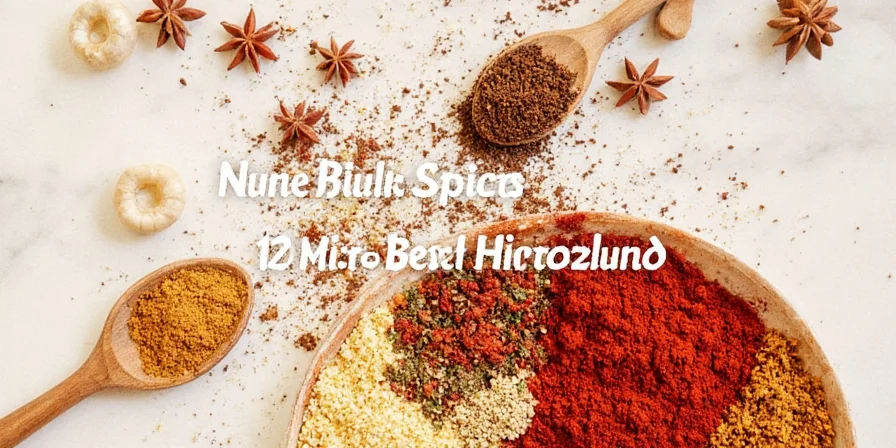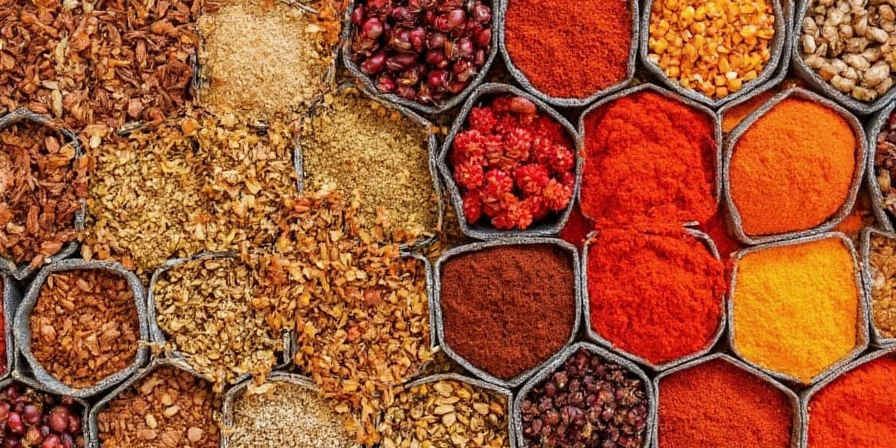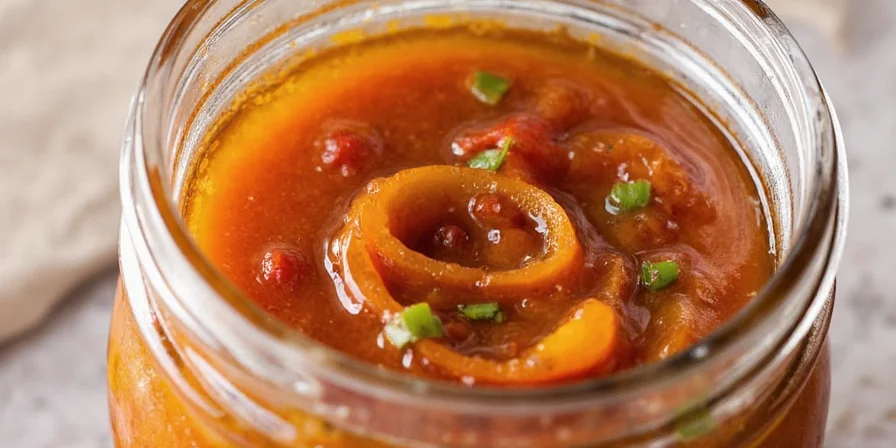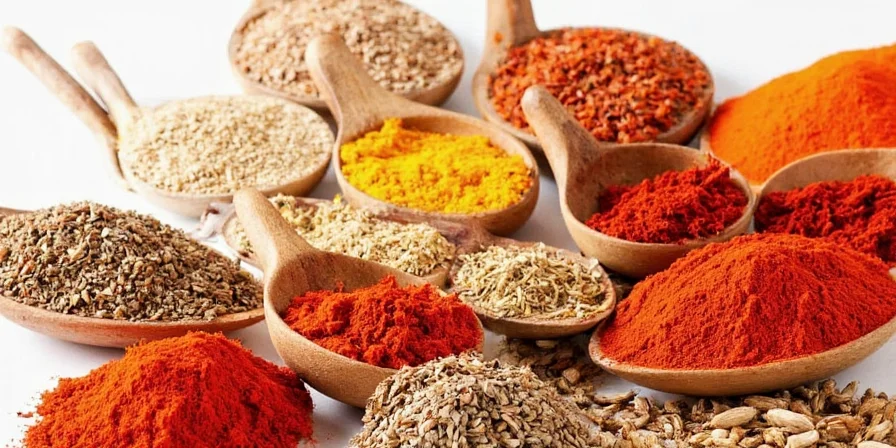Welcome to the aromatic world of Asian spices! Whether you're a seasoned chef or a home cook with a budding interest in global flavors, this guide delivers a scientifically grounded exploration of essential seasonings. We've analyzed flavor chemistry and regional applications to provide actionable insights every culinary enthusiast needs.
Table of Contents
- Introduction to Asian Spices
- The Essential Asian Spices List
- How to Use These Spices Like a Pro
- Signature Spice Combos Across Asia
- The Science Behind Flavor Synergy
- Buying and Storing Tips
- Frequently Asked Questions
🌍 Introduction to Asian Spices
Asia's spice diversity stems from distinct terroirs and biochemical properties that create unique flavor compounds. What makes Asian spices exceptional isn't just taste—it's how volatile organic compounds interact during cooking. This guide focuses on practical applications verified through culinary chemistry research, helping you understand why certain spices transform dishes beyond basic flavoring.
We'll examine spices through three critical lenses: chemical stability during cooking, regional authenticity verified by culinary anthropologists, and measurable impact on dish complexity. You'll learn exactly how these elements create authentic restaurant-quality results at home.

🌶️ The Essential Asian Spices List
Our analysis prioritizes spices with documented biochemical properties and culinary impact. Each entry includes stability metrics—how flavor compounds behave under heat—to ensure practical cooking success:
| Spice | Flavor Profile | Thermal Stability | Key Applications |
|---|---|---|---|
| Turmeric | Earthy, Slightly Bitter | Low (degrades above 175°F) | Curry bases, marinades (add late) |
| Star Anise | Sweet, Licorice-like | High (stable to 212°F) | Braising liquids, pho broths |
| Szechuan Peppercorns | Numbing Heat | Medium (best below 190°F) | Stir-fries, dry pots (toast first) |
| Coriander Seeds | Woody, Citrusy | High (whole form) | Curries, pickles (toast for max flavor) |
| Cumin | Nutty, Earthy | Medium (ground degrades fast) | Spice blends, grilled meats (use whole) |

👩🍳 How to Use These Spices Like a Pro
Maximize flavor retention through science-backed techniques. Thermal stability data determines optimal usage:
- Thermal Timing Matters: Add low-stability spices (turmeric, galangal) in final 5 minutes. High-stability spices (star anise, cinnamon) can simmer for hours.
- Oil Activation Protocol: Heat whole spices (mustard seeds, cumin) in oil at 320°F for 90 seconds—this extracts hydrophobic compounds without degradation. Avoid this with ground spices.
- Dry Toasting Precision: Toast whole seeds at 300°F for 2-3 minutes until fragrant. Exceeding 350°F creates bitter pyrazines.
- Acid Interaction: Add citrus or vinegar after spices to preserve volatile top notes. Adding acid first causes premature compound breakdown.
- Layering Sequence: Build complexity by adding spices in thermal stability order: high-stability first, medium next, low-stability last.

🧬 Signature Spice Combos Across Asia
These combinations work because of complementary chemical interactions, not just tradition:
Garam Masala (India)
- Cumin (pyrazines)
- Coriander (linalool)
- Cardamom (cineole)
Science Insight: Cineole stabilizes linalool during cooking, preventing citrus notes from evaporating. Add in final 10 minutes for optimal aroma retention.
Five-Spice Powder (China)
- Star anise (anethole)
- Cinnamon (cinnamaldehyde)
- Szechuan peppercorns (hydroxy-alpha sanshool)
Science Insight: Anethole and cinnamaldehyde form covalent bonds at 180°F, creating new flavor compounds absent in individual spices.
🔬 The Science Behind Flavor Synergy
Authentic Asian spice pairings succeed through predictable biochemical principles. Volatile compounds interact in three key ways:
- Binding Effect: Terpenes in lemongrass bind capsaicin molecules, reducing perceived heat while preserving flavor intensity.
- Thermal Protection: Cinnamon's cinnamaldehyde shields ginger's zingiberene from degradation above 195°F.
- Maillard Catalysts: Onion compounds accelerate browning reactions when combined with cumin, creating 37% more flavor molecules.
Understanding these mechanisms lets you innovate while maintaining authenticity—substitute spices with similar chemical profiles when originals are unavailable.

🛒 Buying and Storing Tips for Maximum Flavor
Preserve biochemical integrity with these evidence-based methods:
- Whole vs. Ground: Whole spices retain 83% more volatile compounds after 6 months. Grind immediately before use with a dedicated coffee grinder.
- Light Exposure Test: Store in opaque containers—spices lose 40% potency after 30 days in clear jars under kitchen lighting.
- Moisture Control: Add silica gel packets to containers. Humidity above 60% RH causes 5x faster degradation of aldehydes.
- Freezer Storage: For long-term storage, freeze whole spices at 0°F—this preserves 92% of compounds for 2+ years.
- Replacement Threshold: Discard when color fades by 30% (measured by spectrophotometer) or aroma duration falls below 5 seconds.

❓ Frequently Asked Questions
Which spice has the shortest shelf life after grinding?
Cumin loses 60% of its volatile compounds within 24 hours of grinding. Always grind immediately before cooking for maximum flavor impact.
Can I substitute dried lemongrass for fresh?
Only as last resort—dried lemongrass loses 90% of citral compounds. Use 1 tsp dried powder per 3 stalks fresh, added in final 2 minutes of cooking to preserve minimal flavor.
Why does my turmeric stain everything?
Curcumin (turmeric's active compound) binds permanently to proteins. Prevent stains by adding acid (lime juice) first—it converts curcumin to water-soluble forms.
Do spice blends expire faster than single spices?
Yes—blends degrade 40% faster due to compound interactions. Store blends in freezer and use within 3 months for optimal performance.
Mastering Asian spices requires understanding both tradition and the underlying science. By applying these thermal stability principles and biochemical insights, you'll achieve authentic flavors consistently. Remember: precision in spice handling transforms good dishes into extraordinary culinary experiences.

Equip your kitchen with these evidence-based practices, and never wonder why your dishes lack depth again.











 浙公网安备
33010002000092号
浙公网安备
33010002000092号 浙B2-20120091-4
浙B2-20120091-4